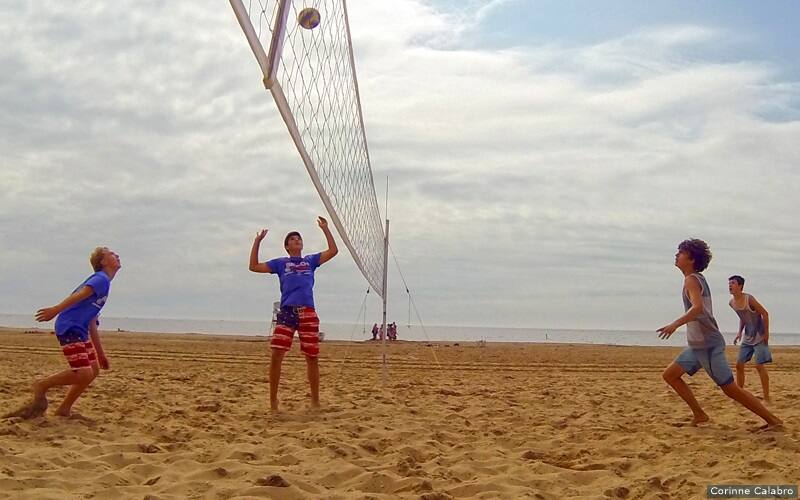
Originally published in VolleyballUSA, Summer 2014 issue
Holly McPeak
Three-time beach Olympian with 72 career titles, Olympic bronze medalist, professional beach coach
“On the beach, you want to get a long touch on the ball – longer than indoors – so you can control it. When you’re passing, you need to slow the ball down so it hangs better in the wind. If you pass a ball on the beach like you would pass indoors, it’s too fast and your partner won’t have time to get there. So hold your platform and touch the ball longer – creating a natural cushion. Lift the ball, slow it down – and give your partner a chance to get under it.”
Mike Dodd
Olympic silver medalist, 75-time pro beach winner, ro beach coach, Saint Mary’s (Calif.) sand coach
“Even before the jump serve era, the serve has always been considered the first and best line of defense to set your team up to score a point. Remember, serving is the only action in volleyball that you totally control, so take your time, think about what serve will best get your opponent in trouble and then execute. Don’t second-guess yourself. Once you decide on the type and location of your serve, go for it.”
Sean Scott
Manager – USA Beach National Teams, 24-time pro beach winner
“Determining whether an attacker is hitting or shooting and when to pull off the net to defend are the biggest differences between indoor and beach blocking. Nobody shoots or drops indoors, but on the beach you have to be able to defend against both hits and shots and pull off the net to defend if you want to be successful. At the highest level of the game, a player like Olympic gold-medalist Todd Rogers will approach the exact same way whether he’s hitting or shooting, but most players will give you a clue about what’s coming. For instance, hitters may approach harder when they’re swinging away than when they’re shooting or drop their arm when shooting versus hitting. Watch for these clues and adjust accordingly. If you’ve determined the attacker is going to shoot, block with your arms more straight up and don’t worry about penetrating the net as much as you would if someone were hitting. And don’t forget, when the set is off the net, it’s usually a good time to drop.”
Ali Wood Lamberson
Former USAV Director of International and High Performance Beach Programs, retired pro, coach of USA Volleyball’s U17 beach national team
“Footwork is really important in beach volleyball because you have a lot of court to cover and have to change directions frequently. Also, performing skills on the beach is extra challenging because of elements like the unstable surface and the wind. Getting your feet to the ball helps you make the last-second adjustments necessary to deal with those factors. Another tip: Keep your shoulders up. This makes it easier to change directions. Finally, don’t broad jump with attacking. Get your feet close behind the ball before you jump. This gives you more height and makes it less likely that you’ll lose the ball in the wind.”
Jeff Alzina
USA Volleyball Elite Development program head coach
“Players are getting taller and stronger every year, and the ball is coming at faster speeds and sharper angles. Elite ball control players utilize their platform from many different angles. Less experienced players often try to get their body behind the ball and play it from their midline. That’s great for free balls, but to handle a tough floater, a fast jump serve or a hard-driven spike, you’ll need to trust your platform away from your body. Always face where the ball is coming FROM and angle your platform to where you want it to GO. With a strong, lower-body base and an extended platform, you can create any angle you’ll need for your partner to set you the ball.”
